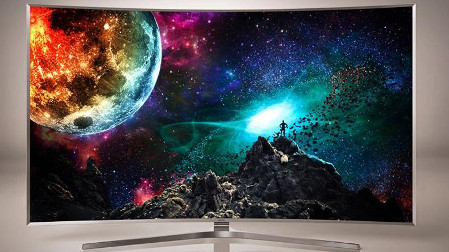Looking Past 4K’s Resolution
This article is the third in a series written by Tom (T.V.) Burns dedicated to examining the intersection of technology, innovation and evolving protocols and formats within the media and entertainment industry.
If you thought the move from standard definition to high definition was fast, brace yourself for the transition to 4K, or Ultra High Definition. This fantastically quick shift to 4K marks the beginning of a new era of innovation in video production. Broadcast and post-production firms are exploring ways to bridge the gap between 4K and HD workflows and to handle the growing demand for storage space, connectivity and speed.
Many consider 4K to be the most significant change in the user experience since the arrival of color; however, I disagree. We all know more resolution is not enough to overcome a poorly written script. On its own, 4K is not a cure-all solution.
DEFINING 4K AND THE HURDLES TO ADOPTION
Discussing 4K or UHD can be confusing since the terms are often used interchangeably. Technically, the 3840x2160 resolution everyone refers to as 4K is actually UHD with true 4K resolution of 4096x2160 shown in movie theaters. To simplify things, I will use the term 4K to refer to the broadcasting resolution of 3840x2160.
So what do these numbers all mean? A full HD resolution is 1920x1080 and 4K essentially doubles those numbers, resulting in close to four times as many total pixels and much sharper images. At first glance, it’s hard to argue against improved image sharpness. However, in order to see the increase in resolution represented by 4K, you need to be standing approximately 5-feet away from an 80-inch display. The problem is not many people have the space to accommodate an 80-inch display or want to sit that closely to their television sets in order to have a native 4K experience.
Another obstacle to overcome is the lack of available content, although help may soon be on the way. While available broadcast content is still lagging behind due to the costs associated with the high bandwidth 4K requires, the home theater market is stepping up to offer more content and hardware. Samsung’s first Ultra HD Blu-ray is scheduled to arrive in early 2016 along with 4K Blu-ray discs.
The demand for 4K content is one of the factors accelerating IP networks and storage, file-based workflows’ move up the innovation stack, an issue I discussed in my last blog.As more content creation companies are looking to increase 4K production, IP transport significantly reduces the load of the higher resolution format.
The professional video industry's #1 source for news, trends and product and tech information. Sign up below.
HDR: THE REAL BENEFIT OF 4K
Outside of viewing sports content—when you truly need the resolution because people are watching matches and games on the largest screen possible—I question 4K’s value beyond a marketing tool for consumer electronics manufacturers to convince you to purchase another TV.
The real value in 4K is the technology that comes along with it. It’s like the Trojan horse that slips into our living room and completely changes the nature of television as we know it. While most people expected 4K’s higher resolution to have the biggest impact, it’s the high dynamic range (HDR), higher frame rate and wide color gamut (WCG) that come along with 4K that are the technological and creative differences that the consumer can immediately see and gives consumers the visual proof they need to rush out and buy a new TV.

In particular, HDR, which significantly expands the contrast and color range, is beginning to emerge as the next buzzword of 2016 as it continues to earn high praise from industry experts. A recent article in Variety includes quotes from 20th Century Fox Home Entertainment president Mike Dunn, Geoffrey A. Fowler of the Wall Street Journal and others remarking on the “more realistic look of HDR.”
The bottom line is although 4K is making a variety of changes possible, 4K by itself is not a game changer. However, I believe as 4K with HDR, WCG and higher frame rate move up the innovation stack, they will transform OTT, broadcast, packaged and streaming media as we know it.
Also see...
February 3, 2016
“To IP or Not to IP: Should You Pull the Plug on Coax?”
Having just spent the last 15 years on “the other side” as a director at Technicolor, it’s easy for me to slip back into the role of the customer when I’m considering the potential impact of these new technologies on the industry.
January 14, 2016
“Why the M&E Technology Stack is Ripe for Disruption”
With every mouse click, news clip view, music download and movie stream, the demands on reliable data storage and bandwidth continue to increase exponentially.
